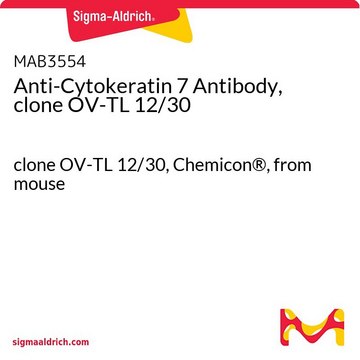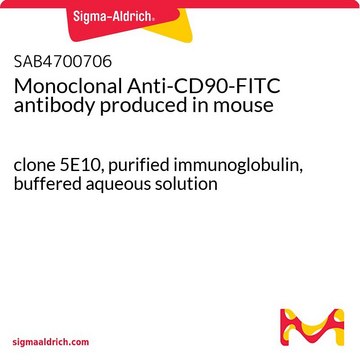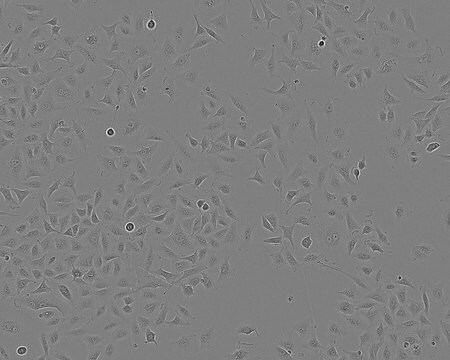CBL194F
Anti-Cytokeratin 7 Antibody, clone LP5K, FITC conjugated
clone LP5K, Chemicon®, from mouse
Sinónimos:
Cytokeratin 7 Antibody
About This Item
Productos recomendados
biological source
mouse
Quality Level
conjugate
FITC conjugate
antibody form
saturated ammonium sulfate (SAS) precipitated
antibody product type
primary antibodies
clone
LP5K, monoclonal
species reactivity
human
manufacturer/tradename
Chemicon®
technique(s)
flow cytometry: suitable
immunocytochemistry: suitable
immunohistochemistry (formalin-fixed, paraffin-embedded sections): suitable
isotype
IgG2b
NCBI accession no.
UniProt accession no.
shipped in
ambient
target post-translational modification
unmodified
Gene Information
human ... KRT7(3855)
Specificity
FUSION PARTNER: Sp2/0
Immunogen
Application
Immunocytochemistry: isolated EVT cells fixed with 0.5% PFA at 4°C for 15 minutes followed by acetone at -20°C for 2 minutes. Antibody was used at 1:10 dilution (Sato et al., 2003).
Flow cytometry: 10μL of conjugate per test.
Optimal working dilutions must be determined by the end user.
Cell Structure
Cytokeratins
Quality
Physical form
Storage and Stability
Other Notes
Legal Information
Disclaimer
¿No encuentra el producto adecuado?
Pruebe nuestro Herramienta de selección de productos.
Storage Class
12 - Non Combustible Liquids
wgk_germany
WGK 2
flash_point_f
Not applicable
flash_point_c
Not applicable
Certificados de análisis (COA)
Busque Certificados de análisis (COA) introduciendo el número de lote del producto. Los números de lote se encuentran en la etiqueta del producto después de las palabras «Lot» o «Batch»
¿Ya tiene este producto?
Encuentre la documentación para los productos que ha comprado recientemente en la Biblioteca de documentos.
Nuestro equipo de científicos tiene experiencia en todas las áreas de investigación: Ciencias de la vida, Ciencia de los materiales, Síntesis química, Cromatografía, Analítica y muchas otras.
Póngase en contacto con el Servicio técnico








